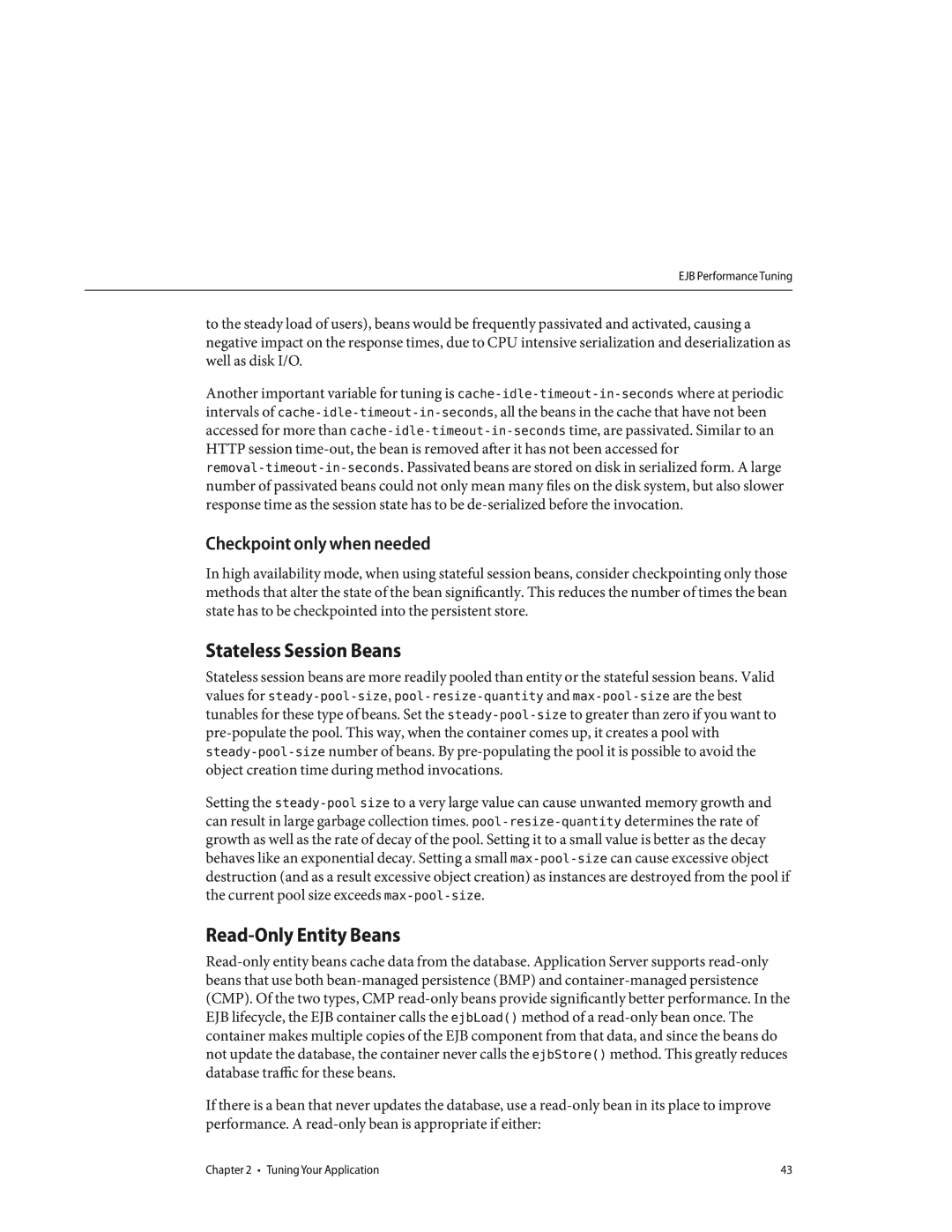EJB Performance Tuning
to the steady load of users), beans would be frequently passivated and activated, causing a negative impact on the response times, due to CPU intensive serialization and deserialization as well as disk I/O.
Another important variable for tuning is
Checkpoint only when needed
In high availability mode, when using stateful session beans, consider checkpointing only those methods that alter the state of the bean significantly. This reduces the number of times the bean state has to be checkpointed into the persistent store.
Stateless Session Beans
Stateless session beans are more readily pooled than entity or the stateful session beans. Valid values for
Setting the
Read-Only Entity Beans
If there is a bean that never updates the database, use a
Chapter 2 • Tuning Your Application | 43 |
